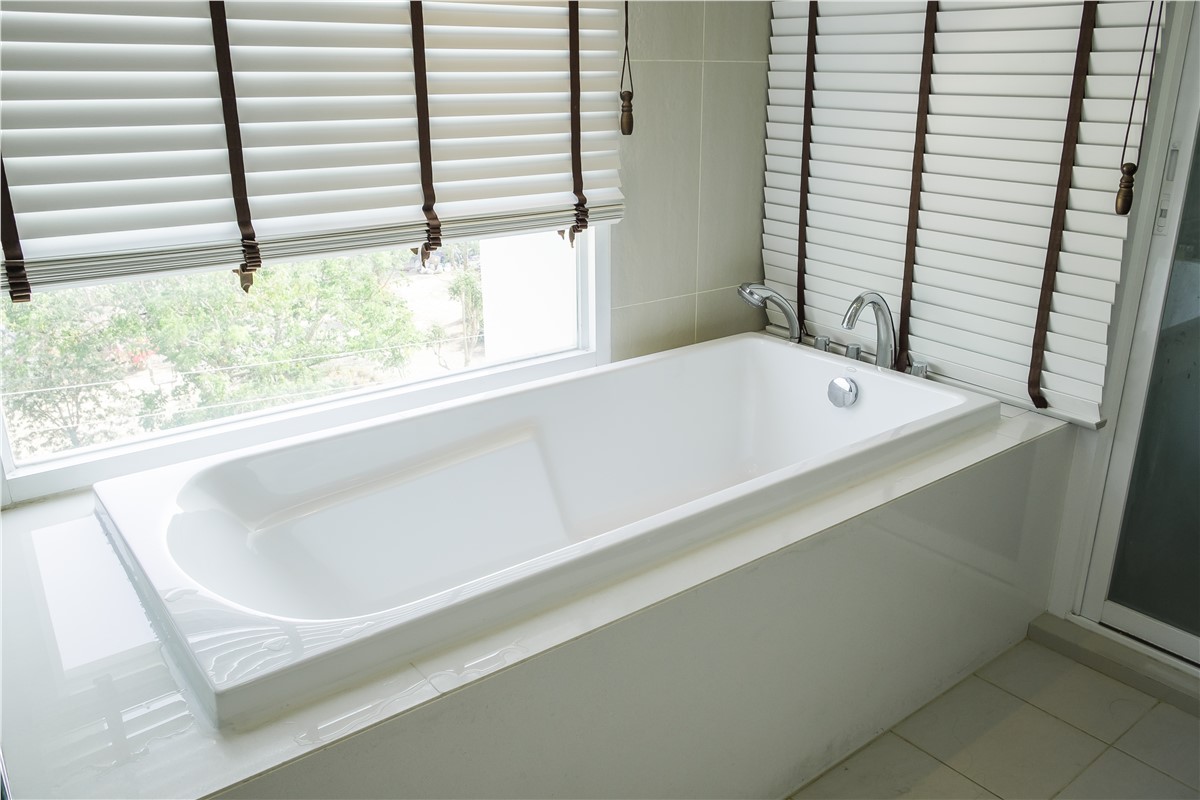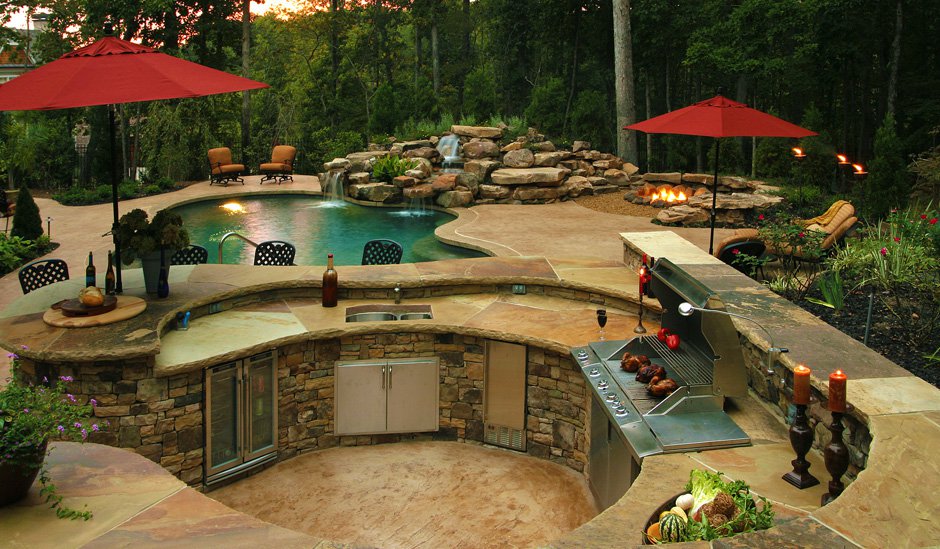
A great way to give your bathroom character is to use stone. The best choice for bathroom flooring is natural stone. This is especially true when paired up with complementary colors. Installing stone in your bathroom is a complicated task. Here are some tips. Make sure the stone is resistant to water. Granite is an affordable alternative to marble, but it's important that you choose a high-quality slab.
It is a good idea for you to consult a designer if you have any questions about cleaning your stone bathroom. Engineered stone can be uniform in both color and pattern. Natural stone can be found in many colors and styles, so you might end up with something different than what you planned. However, you should discuss the care and maintenance of your stone with your contractor. You should consider whether stone is best for your bathroom if you intend to use it every day.

When it comes to maintenance, it is important to make sure to use the right cleaners. Do not clean natural stone with harsh chemicals, or use soapy products. Use a neutral pH cleaner to get rid of water deposits and prevent the formation of grime and mildew. Avoid over-spray, as it can dull the stone's appearance. Ideal soaps have a neutral pH balance.
Stone flooring can be durable, but it is also affordable. If you prefer a dark décor theme, slate is a great alternative. When choosing natural finishes and textures, make sure you do not forget about them. For a non-slip finish in your bathroom, you have the option of using tumbled, bush-hammered or chiseled tiles. You can choose from grey or white tiles, or go wild and use off-white ones.
You should test the absorbency of any stone before sealing it in your bathroom. To do this, run a water-test on it. After a few minutes, observe the color. If the color is darker than the sample, it means that water has penetrated the surface. This will require sealing. Online retailers can sell specific stone cleaning products. Avoid causing stone damage by using a mild cleanser that is suitable for natural stone.

Marble is another option to natural stone for your bathroom. Granite and marble are two of the most popular natural stone options for bathrooms. These natural stones can add luxury and beauty to your space. And they can be inexpensive, too. This material is also very durable and has a high resale price. As wall and floor coverings, marble and other natural stones are possible. You can even choose to mix different types and textures for a unique bathroom design.
FAQ
Are you able to live in a renovated house?
Yes, I am able to live in a house and renovate it.
Can you live in a house while renovations are going on? The time taken to complete the work will impact the answer. If the renovation process lasts less than 2 months, then yes, you can live in your home while it's under construction. You cannot live in your house while the renovation process is ongoing if it lasts more than two years.
You should not live in your house while there is a major building project underway. This is because you could be injured or even killed by falling objects on the construction site. Noise pollution and dust from heavy machinery on the job site could also be a problem.
This is especially true if your house has multiple stories. If this happens, the sound and vibration caused by the construction workers can cause significant damage to your home and contents.
As mentioned earlier, you will also have to deal with the inconvenience of living in a temporary shelter while your home is being renovated. This means that you won't have access to all the amenities that come with your own home.
As an example, your washer and dryer will be out of commission while they are being repaired. You will also have to put up with the smell of paint fumes and other chemicals as well as the loud banging sounds made by the workers.
These factors can cause stress and anxiety in you and your family. You should plan ahead to avoid feeling overwhelmed by this situation.
When you decide to start renovating your home, it is best to do some research first so that you can avoid making costly mistakes along the way.
A reputable contractor can also be of assistance to you in order to make sure everything runs smoothly.
How Much Does It Cost To Renovate A House?
Cost of renovations depends on the material used, how large the job is and how complex it is. Some materials like wood need additional tools, like saws or drills, while others like steel don't. The price of renovations depends on whether you hire a contractor to do the job or if you are willing to do the work yourself.
The average cost of home improvement projects ranges from $1,000 to $10,000. If you plan to hire professionals, the total cost would range from $5,000 to $25,000. On the other hand, if you decide to do the entire task yourself then the total cost could reach up to $100,000.
The final cost for renovation depends on many factors. The type of material used (e.g. Brick vs. concrete, the project's size, the number and duration of workers, etc. When estimating the total cost for renovation, it is important to keep these factors in your mind.
Are permits required to renovate my home?
Yes. You will need permits to start any home renovation project. A building permit and plumbing permit are required in most cases. You might also require a zoning permission depending on which type of construction is being undertaken.
Statistics
- A final payment of, say, 5% to 10% will be due when the space is livable and usable (your contract probably will say "substantial completion"). (kiplinger.com)
- They'll usually lend up to 90% of your home's "as-completed" value, but no more than $424,100 in most locales or $636,150 in high-cost areas. (kiplinger.com)
- According to the National Association of the Remodeling Industry's 2019 remodeling impact report , realtors estimate that homeowners can recover 59% of the cost of a complete kitchen renovation if they sell their home. (bhg.com)
- Rather, allot 10% to 15% for a contingency fund to pay for unexpected construction issues. (kiplinger.com)
- Most lenders will lend you up to 75% or 80% of the appraised value of your home, but some will go higher. (kiplinger.com)
External Links
How To
How do I plan a whole house remodel?
It takes careful planning and research to plan a complete house remodel. Before you start your project, there are many factors to consider. It is important to determine what type of home improvements you are looking to make. There are several categories you can choose from, such as bathroom, kitchen, bedroom, living area, and so on. Once you have decided which category you wish to work in, you will need to determine how much money you have to spend on your project. If you don't have experience with working on houses, it's best to budget at minimum $5,000 per room. If you have experience, you may be able to manage with less.
Once you have figured out how much money you can afford to spend, you'll have to determine how big of a job you want to tackle. If your budget only allows for a small renovation of your kitchen, you will be unable to paint the walls, replace the flooring or install countertops. On the other hand, if you have enough money for a full kitchen renovation, you can probably handle just about anything.
Next, find a contractor that specializes in the project you are interested in. This will guarantee quality results, and it will save you time later. Once you have found a reliable contractor, it is time to start gathering supplies and materials. Depending on the size of your project, you may need to buy everything from scratch. However, it is possible to find everything you need in a variety of shops that sell premade items.
Once you've collected all the materials you will need, you can begin to plan. To begin, draw a sketch of where you would like to place furniture or appliances. Next, plan the layout. Remember to leave enough space for outlets and plumbing. Make sure to position the most visited areas close to the front door. Visitors can also easily access them. Last, choose the colors and finishes that you want to finish your design. To save money and keep your budget low, you should stick to neutral tones.
Once you have completed your plan, it is time to begin building. Before you begin construction, it's important to check your local codes. Some cities require permits. Other cities allow homeowners without permits. Before you can begin construction, remove any walls and floors. Next, you'll lay down plywood sheets to protect your new flooring surfaces. You will then attach or nail pieces of wood together to make the cabinet frame. Finally, attach doors and windows.
There will be some finishing touches after you are done. For example, you'll probably want to cover exposed pipes and wires. To do this, you'll use plastic sheeting and tape. Also, you will need to hang mirrors or pictures. Be sure to tidy up your work space at all costs.
These steps will help you create a functional, beautiful home that is both functional and attractive. Now that your house renovation plan is in place, you can get started.